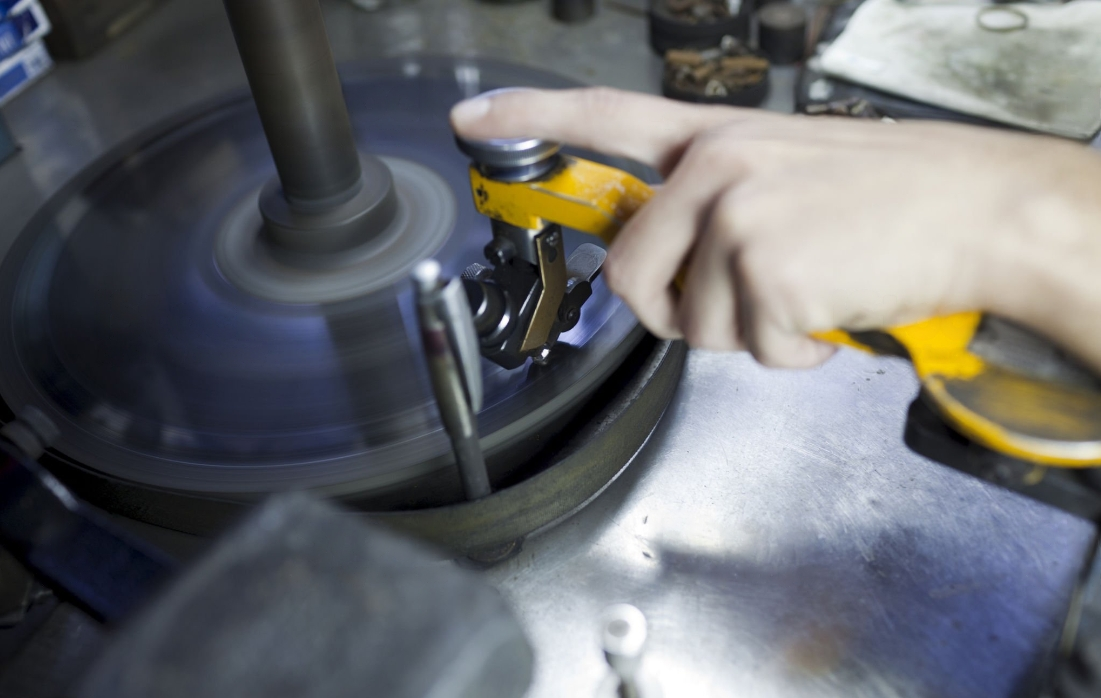
Diamonds became increasingly sought after for their rarity and beauty. In the 15th century, the diamond mines of India’s Golconda region produced some of the world’s most valuable stones, which were traded across the globe.

Planning and marking: The rough diamond is examined and mapped to determine the optimal way to cut it, taking into account the size, shape, and quality of the stone. The diamond is then marked with a laser to guide the cutting process.
Cleaving: The diamond is first cleaved, or split, along its natural planes using a specialized tool. This is done to separate the diamond into smaller pieces that can be more easily shaped and polished.
Bruting: The next step involves shaping the diamond into a round shape, known as bruting. This is done by rotating the diamond against a spinning wheel coated with diamond powder, which grinds away the edges and creates a round shape.
Blocking: The diamond is then shaped further by blocking, which involves cutting and shaping the diamond into a predetermined shape using a diamond saw.
Faceting: The diamond is then faceted, or cut with precise angles and shapes to maximize its brilliance and sparkle. This is done using a rotating wheel coated with diamond powder, which grinds away the diamond to create each facet.
Polishing: The diamond is then polished using a series of finer and finer diamond powders, each designed to smooth and shine the diamond’s surface. This is done until the diamond reaches the desired level of shine and clarity.
Final inspection: The finished diamond is inspected to ensure it meets the required specifications and is of the highest quality.
Grading: The diamond is graded based on the 4Cs: carat weight, color, clarity, and cut. The grading determines the value of the diamond and its suitability for different uses such as for jewelry or investment purposes.
Certification: The diamond is then sent to a reputable gemological laboratory, such as the Gemological Institute of America (GIA), for certification. The lab evaluates the diamond and issues a certification report that provides detailed information about the diamond’s characteristics.
Setting: Once the diamond is certified, it can be set in a piece of jewelry, such as a ring, necklace, or earrings. The diamond is carefully placed into a metal setting that holds it securely in place, and the jewelry is polished and finished.
Diamonds became increasingly sought after for their rarity and beauty. In the 15th century, the diamond mines of India’s Golconda region produced some of the world’s most valuable stones, which were traded across the globe.
In conclusion, Golden Ages represent a period of human history when art, culture, and innovation reached new heights.
Varius sit amet mattis vulputate enim nulla. Viverra maecenas accumsan lacus vel facilisis.